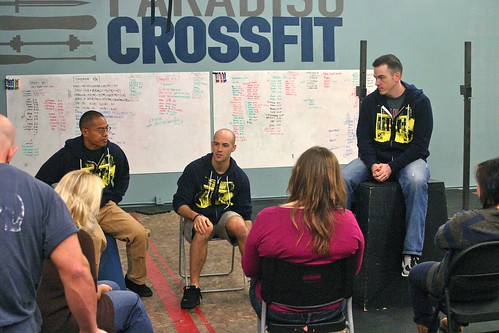If it looks easy on paper . . .
Seven rounds for time of: – Results
10 Wall Ball shots, 20/14 lb ball
10 Pull-ups
Kevin Montoya 4:15, Heather Bergeron 5:59 (14 lb ball)
‘Let’s talk about this.’
*********************************
Some WODs have come up whose diffictulty on paper (or lack thereof) are grossly disproportionate to their actual agony. Athletes are continually stymied because it turned out to be way harder in real life than what they perceived it to be when reading it. This is my attempt at explaining why even the simplest and most basic looking WODs can be the most lethal, and the explanation is not so complicated as people might think.
In fact, it’s been right in front of our faces the whole time.
CrossFit is constantly varied, functional movements, at high intensity. High Intensity is key. Remember it is mathematically impossible to even calculate intensity without it’s denominator, Time.
Also remember that Intensity is the independent variable associated with optimizing returns, and if you want to optimize intensity, you’ve got to move large loads, long distances, and FAST.
And moving large loads, long distances fast, is hard work. When a WOD calls for one, two, or three movements done for time, I promise it’s going to be hard. It’s going to be uncomfortable. And that’s why it’s so hard when done in real life, and not hard when looked at on paper: Because you’re going as fast as you can, as hard as you can. Even if you sped up some of our warm ups, they could turn into grueling, intense WODs. That’s my conjecture anyway. The more you understand and appreciate Intensity, the more you’ll be able to glean and discern high power output WODs from low power output WODs.
Post thoughts to comments.
















